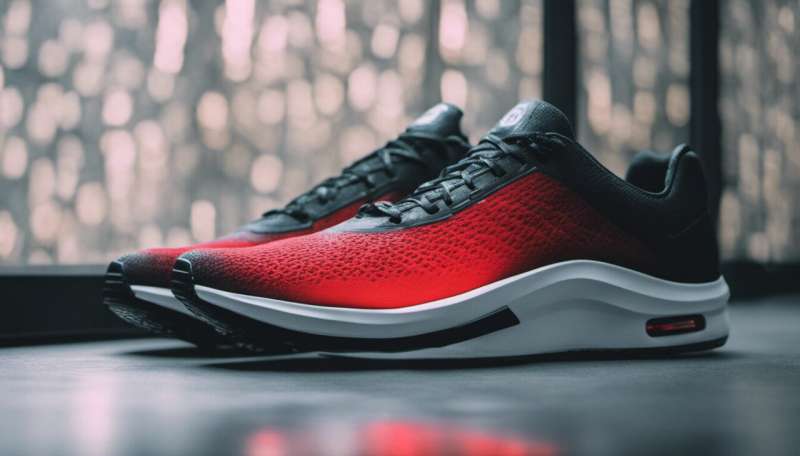This article has been reviewed according to Science X's editorial process and policies. Editors have highlighted the following attributes while ensuring the content's credibility:
fact-checked
trusted source
written by researcher(s)
proofread
Do high top shoes actually reduce ankle sprain risk? Here's what the research says

Ankle sprain is one of the most common musculoskeletal injuries, particularly in sports like netball, basketball and football where jumping, landing on one foot and sudden direction changes are part of the game.
Ankle sprains can be painful, debilitating and may result in ongoing ankle problems. In fact, people with a history of a previous ankle sprain are more likely to sprain an ankle again in future.
Prevention is key. In an effort to reduce sprain risk, many people look for "high-top" shoes, where the section around the side of the shoe (also known as the "collar") extends up closer to the ankle.
But what does the research say? Do high-top shoes actually reduce your sprain risk?
High-tops don't always help—and can sometimes harm
Plenty of research exists on this topic but unraveling the truth is complicated by inconsistency between studies. Researchers may have different ways of investigating the issue, of measuring the shoes success, or even different ways of defining a "high-top" shoe.
For example, the reported difference in collar height between "high-top" to "low-top" shoes was considerable, ranging from 4.3 to 8.5cm across different studies.
That said, the trend in the current research literature suggests the ankle protection provided by high-top shoes may not be enough to significantly reduce sprain risk while playing sport.
In fact, this design may also reduce athletic performance, and increase the risk of ankle sprain in some people.
Research does support the idea high-top shoes provide good stability when outside forces may cause an ankle sprain when the person is stationary (for example, when a person standing still is knocked from the side and starts to topple over, putting stress on the ankle).
However, once you start moving it's a different story. In fact, some research suggests high-top shoes may even increase the risk of ankle sprain in some activities.
This may be because these shoes can change the way we use the muscles in our ankles and legs.
Specifically the muscles on the outside of the lower leg may start firing later and not work as strongly to stiffen the ankle when your're wearing high top shoes (compared to low top shoes).
To reduce ankle sprain risk, it is important the muscles on both sides of the legs work together at the same time.
Tellingly, delayed and weaker activation of the muscles on the outside of the lower leg is greater in people with chronic ankle instability. This finding suggests high-top shoes may not be the best choice for anyone with a history of ankle sprain.
There is also some evidence wearing high-top shoes may impede athletic performance by reducing jump height and increasing shock transmission to other parts of the body.
Getting the right fit
External supports such as tape and braces are effective in both uninjured and previously injured ankles. But they're most effective when used in combination with preventive exercise programs.
What is crucial when selecting footwear is good fit and good function. Footwear should fit the foot in length, width and depth, with a thumb's width between the end of the longest toe and the tip of the shoe. You should have enough space across the ball of the foot for it to not be pulled tight when standing.
However, around 70% of people are wearing shoes that are not fitted appropriately. Women and girls more often have shoes that are too narrow, and older males often wear shoes that are too long.
Ill-fitting footwear can increase falls, induce greater levels of osteoarthritis and impedes natural foot function in adults and children.
Make sure you've got the right shoe for the job. Form must suit function.
As an example, there's merit in wearing a well-fitted high-top sneaker during static, standing based activities.
However, a low-top sneaker may be more beneficial during sporting activities that require frequent stopping, jumping, sudden changes in direction or for people with a history of ankle sprains.
This article is republished from The Conversation under a Creative Commons license. Read the original article.![]()




















